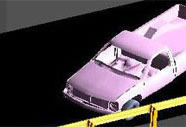Research
Supercomputer Center, Electroscience Laboratory follow expansions with research collaboration
Last month, the Electroscience Laboratory (ESL) at The Ohio State University celebrated the groundbreaking of a new facility on Kinnear Road that will showcase the center’s unique, cutting-edge research. Just down the street, the Ohio Supercomputer Center (OSC) last summer installed a $4 million expansion to its flagship computing system, providing a huge boost to the state’s research and innovation aspirations.
Darkstrand and Ohio Supercomputer Center join forces for corporate supercomputing access
Darkstrand, a pioneer in corporate high-speed connectivity bridging research and commercialization, today announced a strategic alliance with the Ohio Supercomputer Center in Columbus with the mutual objective of bringing the research and development capabilities of the Center to the national commercial marketplace.
H.S. students, teachers to learn modeling, simulation skills
Ohio’s first STEM Academy in Computational Science and Engineering is underway, providing select high school students and teachers with valuable skills in simulation and modeling.
Partnership lends computational support to acclaimed research into polar climate change
As one of the esteemed scientists working with the Intergovernmental Panel on Climate Change (IPCC), David Bromwich’s research — conducted, in part, at the Ohio Supercomputer Center — on the changes in polar atmospheric circulation and Antarctic climate variability contributed to winning this year’s Nobel Peace Prize.
Upgrade to OSC Supercomputer Provides More Power for Bio-Sciences Research
For more information, contact:
Leslie Southern
OSC Director of High Performance Computing
614-292-9367
leslie@osc.edu
SuperViz '94 Showcases Excellent Science -- Area HS Students Featured in Supercomputing Video
The Ohio Supercomputer Center (OSC) announces that five science video animations produced at the center were among the 34 selected for the International Supercomputing '94 Conference showcase video, SuperViz '94, as excellent examples of scientific research. With the assistance of OSC staff Tim Rozmajzl, Leslie Southern, and Rob Berry, two of the projects were created by high school students who participated in OSC's 1994 Summer Institute program.
UC Center Studies Ways to Design Safer Guardrails
 Just like trends in clothing, cars change their look and design rapidly with the times.
Just like trends in clothing, cars change their look and design rapidly with the times.
In recent years, the number of pickup trucks, passenger vans, and sport utility vehicles seen on US highways has grown substantially. Recent crash testing by the Federal Highway Administration indicates that these types of cars may be more prone to overturn when crashing into guardrails on US highways.
OSC Demonstrates Shared Virtual Environments at Spring I2 Member Meeting
Why does a second Internet need to be created? Ask 10 researchers and policymakers across the nation and you may receive 10 different answers. One important answer lies in the health and well-being of Americans.
Many advances in medicine depend on advances in technology, including virtual reality, computer simulations, and a faster Internet. Researchers at the Ohio Supercomputer Center (OSC) in Columbus will demonstrate their recent work at the Spring Internet 2 (I2) Member meeting in Washington, DC, April 14-18.

